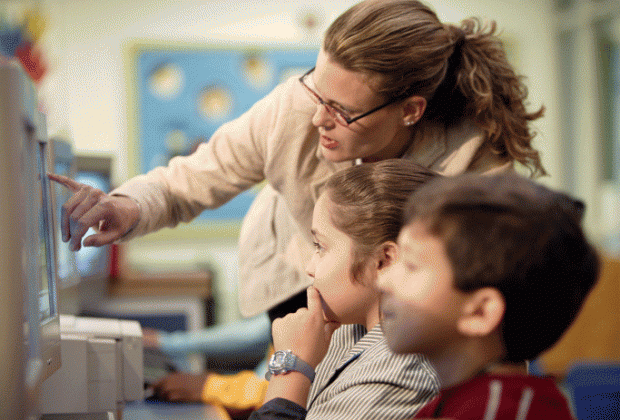
When computers first burst into the classroom back in the late eighties and nineties, most teachers were nonplussed by a new technology they had hardly been aware of, much less trained for. They stared at these new machines and wondered what were they supposed to do with them. A lifetime of teaching couldn’t provide them with a clue and what they were hearing from their administrators only added to the confusion. As a result some retired rather than deal with the newfangled things and some simply set them on their desks and ignored them.
The majority, thankfully, buckled down and decided to find out how these things worked and how they could be made to serve their students. Of course one of the first things they discovered was that the students either already knew how to use the darn things or were capable of learning to use them faster than their teachers … and teachers are still playing catch up with their students with each new technological arrival.
To get teachers off this treadmill, Tom Daccord, director and co-founder of the professional learning consultancy EdTech Teacher, wants to make a fundamental change in classrooms. In his view it is time to pay less attention to what he calls the “nuts and bolts of technology” and more to “addressing pedagogy and best practices.” Learning how to operate the new tablets or phones is less important than having a “vision” for how these new tools can best be applied as teaching aids in the classroom.
He believes that the best way to inspire teachers “to integrate technologies as creative platforms that manifest student learning and nurture essential skills for our digital age” is with a professional development (PD) program comprised of the following six characteristics:
1. Constructivist: PD programs should be experiential rather than depend on lectures. Participating teachers should learn the properties and potentialities of the new devices rather than concerning themselves exclusively with how operate them.
2. Collaborative: Team work. He believes that real change can only come about from peer-to-peer relationships.
3. Differentiated: He uses the term “multiple pathways to learning.”
4. Personalized: Once the teachers start working together in groups solving problems, the facilitators can then move around the room and work with individuals.
5. Mobile: The kids communicate with these devices constantly. Teachers don’t need to teach them how use them; teachers need to figure out how best to use them as educational tools.
6. Goal Oriented: He speaks of “student directed learning,” teaching kids not how to use a tool but how to get the most educational value out of the tool the youngsters already know how to use.
Teachers need not learn everything there is to learn the tricks to every new technological teaching tool that shows up in their classroom. The students can be trusted to do that! It’s up to the teachers to work together to come up with the best way to use them in the education process. No more chasing your students, lead them.

